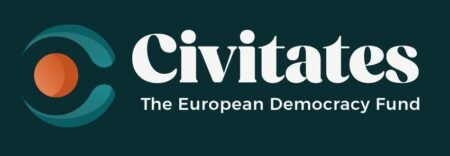The European Commission has published an evaluation report of investments under the European Social Fund (ESF) during the 2007-2013 period, with specific reports for each EU Member State.
Advertisement
What is the European Social Fund?
The European Social Fund (ESF) is Europe’s main instrument to invest in human capital. Priorities are helping people to get a job or allow them to keep their job, integrating disadvantaged people into society and ensuring fairer life opportunities for all.
It is the first EU funding instrument created by the Treaty of Rome in 1957.
How does the Fund work?
The working of European Social Fund is based on the principle of shared management. The EU, national governments and regional administrations share responsibility for planning and implementing activities relating to ESF funding. More concretely, EU institutions, national administrations, social partners, civil society and the vast range of local organisations that deliver ESF-backed projects on the ground, work together in partnership to deliver the ESF’s objectives.
How much funding was allocated?
The total allocation for ESF 2007-2013 was 115.6 billion, of which 76.8 billion from the EU budget, 35.1 billion from national public contributions and 3.7 billion from private funds.
What are the main characteristics of the operations in the period 2007-2013?
Funded operations were carried out between January 2007 and December 2015 and were characterised by the following:
- ESF-programmes fall under two objectives, defined by Art.3 of the ESF Regulation:
- The convergence objective aims at speeding up the convergence of the least-developed Member States and regions by improving conditions for growth and employment.
- The regional competitiveness and employment objective aims at strengthening regions’ competitiveness and attractiveness as well as employment outside the least-developed regions.
More than half of the EU-share of the funding (58%) was allocated to the convergence objective between regions.
- The European Social Fund was implemented in the 2007-2013 programming period in all 28 Member States through 117 Operational Programmes (OPs).
- The allocation was divided among different themes as defined by Art.2 of the ESF Regulation: Investments in human capital accounted for the biggest proportion of the funding (45.5%), followed by investments in access to employment activities (34.3%). 14.3% of the funding was allocated to social inclusion, 2.1% to strengthen institutional capacity and 0.7 % to promoting partnerships.
- By December 2014, managing authorities (MAs) had declared to the Commission expenditure amounting to 79.3% of the total allocation and 90.7% by 31 May 2016. However, there are considerable differences across Member States.
What was new in the ESF funding period 2007-2013?
A number of key changes were introduced compared to the previous programming period. Programmes were more closely linked to EU employment policies and objectives, as well as relevant country specific recommendations made in the European Semester.
The economic and financial crisis drastically changed the socio-economic context in which the ESF programmes were implemented, compared to the period in which they had been programmed (between 2005 and 2007). Thanks to its flexibility, the ESF was able to properly respond to this challenge. The enhanced flexibility also allowed more variation in ways to achieve objectives. For example, a wider range of activities for regions under the convergence objective was possible.
What were the results of the ESF on fostering employment and social inclusion?
At the end of 2014, around 98.7 million participants were recorded in ESF activities, helping to integrate them in the labour market and improving their skills. The ESF activities effectively reached key target groups such as inactive (36%) persons, unemployed (30%), low-skilled (40%), young people (30%) and the disadvantaged (at least 21%).
At least 9.4 million participants found a job, and 8.7 million gained a qualification or certificate. 13.7 million participants reported other positive results, such as improved skills and competences.
ESF 2007-2013 was an important instrument supporting the implementation of national and EU priorities under the Lisbon and Europe 2020 strategies and related Country Specific recommendations.
Member States benefited from significant additional financial resources to address employment and social challenges through the ESF, to reach people and set-up policies that otherwise would have had difficulty to find financial support. The ESF also has sparked fresh ways of working between stakeholders and supported local and regional innovations that then were mainstreamed nationally.
The ESF has played an essential role in facilitating the good functioning of the labour market, supporting the modernisation of public employment services and other institutions responsible for active labour market actions.
In less developed regions the ESF has supported reforms in the education, judiciary and general public administration. This way, it gave a positive impetus to the business environment and enhanced more inclusive societies.
For example, in Bulgaria, the ESF targeted a broad set of EU 2020 objectives and Country Specific Recommendations, such as addressing early school leaving, improving access to tertiary education, targeted support for the Roma and other disadvantaged groups.
For example, in Latvia, the ESF helped to maintain social cohesion against the background of the economic crisis. Funding supported temporary work schemes and provided the majority of funding for training of unemployed such as vocational students and Phd level students.
For example, in Poland, the ESF supported activities to strengthen labour market integration, judiciary services, expand use of e-government services, improve strategic planning and boost the business environment.
Were there other positive outcomes of the ESF?
Estimates highlight that the ESF also had a positive impact on GDP (0.25% increase) and productivity, according to macroeconomic simulations. These effects are very striking in the EU-12 (1.5% increase), but they are also positive for the EU 15 (0.2% increase).
What are the main lessons of the evaluation?
The ESF should continue to be closely aligned with EU and national policy priorities, as well as those of the European Semester. It should maintain its flexibility to adjust to emerging needs, ensuring good coverage of disadvantaged groups focusing both on young and older people. More tailored training activities to the needs of stakeholders would be an improvement. The ESF should be even more result-oriented by defining, for example, robust objectives and targets and by strengthening monitoring and evaluation systems. In order to reduce the administrative burden of the fund management, further simplification should be developed and implemented while the Member states administrative capacity should be further enhanced.
Many of the lessons learned through this evaluation have already been taken into account in the next regulatory framework for the 2014-2020 programming period. There has been an increased coordination with other Funds, as well as the integration of the Youth Employment Initiative. At least 20% of the overall ESF allocation must now be invested in social inclusion.
Other lessons should be considered in the context of preparations for the ESF post-2020. For example, Member States need to improve their evaluation capacity, and the Commission must continue its efforts to reduce the administrative burden. This evaluation will, moreover, feed into discussions on ESF post-2020 and any impact assessment for future programming periods.
How was this evaluation carried out?
To ensure independence, the evaluation was carried out by external evaluation experts from 2013 until 2016. It consisted of a preparatory study, five thematic studies covering the range of ESF interventions and a synthesis report. It also benefited from the results of an open public consultation. The findings presented here are based on achievements till the end of 2014 with one year of implementation remaining.
Are there any good examples of concrete results from the disbursement of ESF funds?
On Social Inclusion
“Towards Employment development of intermediation services for employing individuals with impaired hearing” (LT)
Thanks to this project in Lithuania, around 450 deaf job seekers found employment at the end of 2012. The rate of people with impaired hearing gaining employment reached 70%, exceeding the planned target of 50%, despite the generally worse economic environment. The combination of the experience and efforts of the Public Employment Services and the Lithuanian Association of the Deaf was critical in achieving such high job placement results.
On Human Capital
The Higher Education and Research Apprenticeship (HEAP) in Piedmont” (IT)
The HEAP project in Italy is an innovative instrument, shared between universities and enterprises, creating a bridge between academic institutions and the business world. It offered a flexible set of courses, combining academic knowledge with work-based experiences. Research projects or educational paths were tailored to the employer’s specific needs. The intervention was very effective in terms of placement, as 95% of apprentices achieved a long-term employment contract.
On Access to Employment
“Improvement plan of Employment Service of Catalonia and integration of new platforms” (ES)
This programme in Spain provided the employment service offices of Catalonia with a new model for orientation and professional training, increasing the regional employability rate. This model was developed with the help of unemployed people themselves and therefore adapted to their needs. It focused on the assessment of unemployed people’s competences, in order to improve their orientation in the labour market. The new model was applied to more than 1.6 million users.







